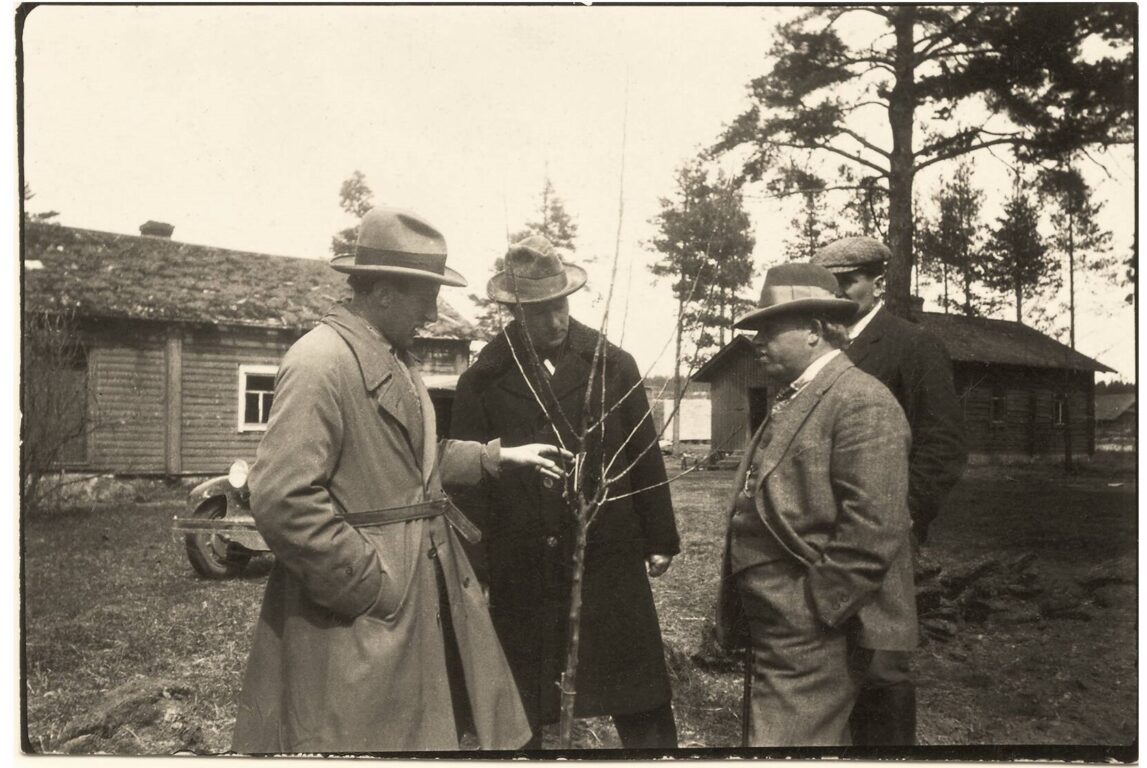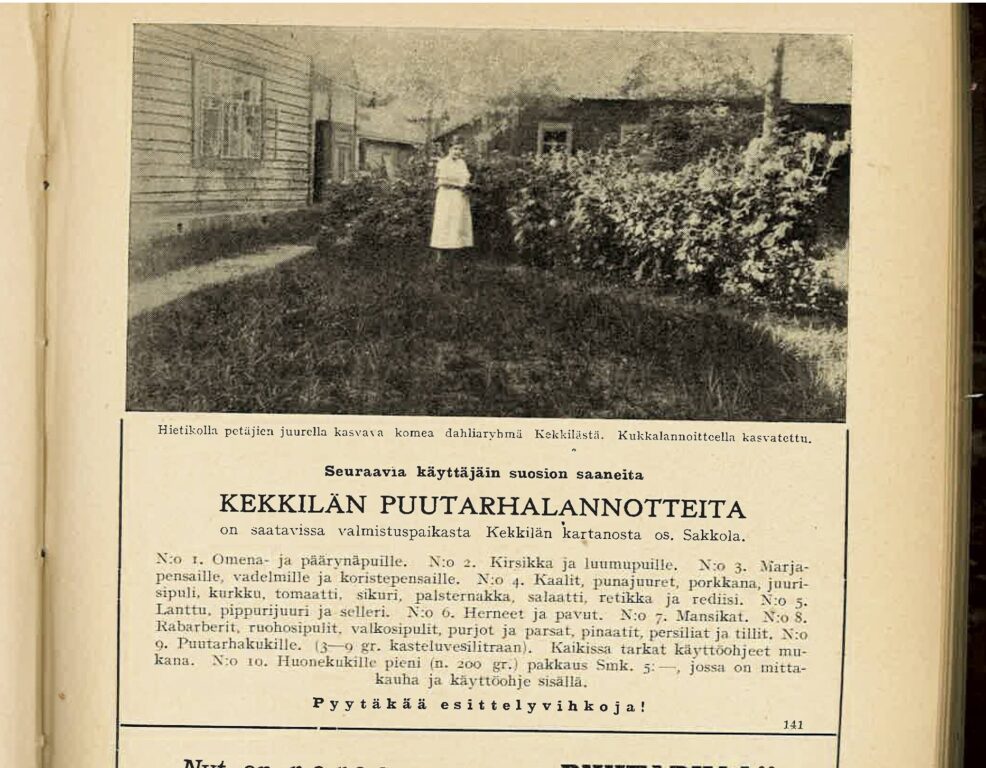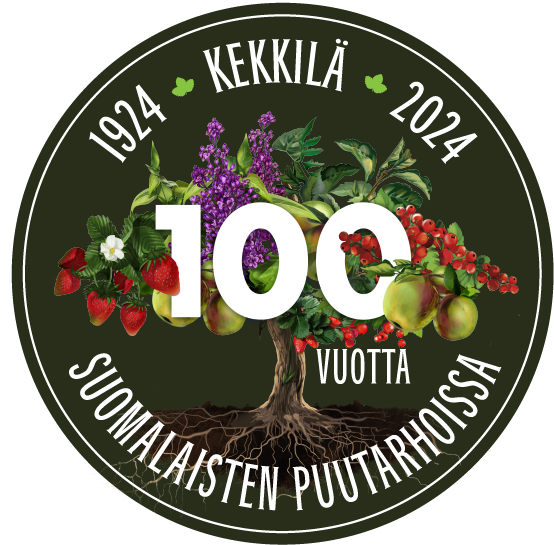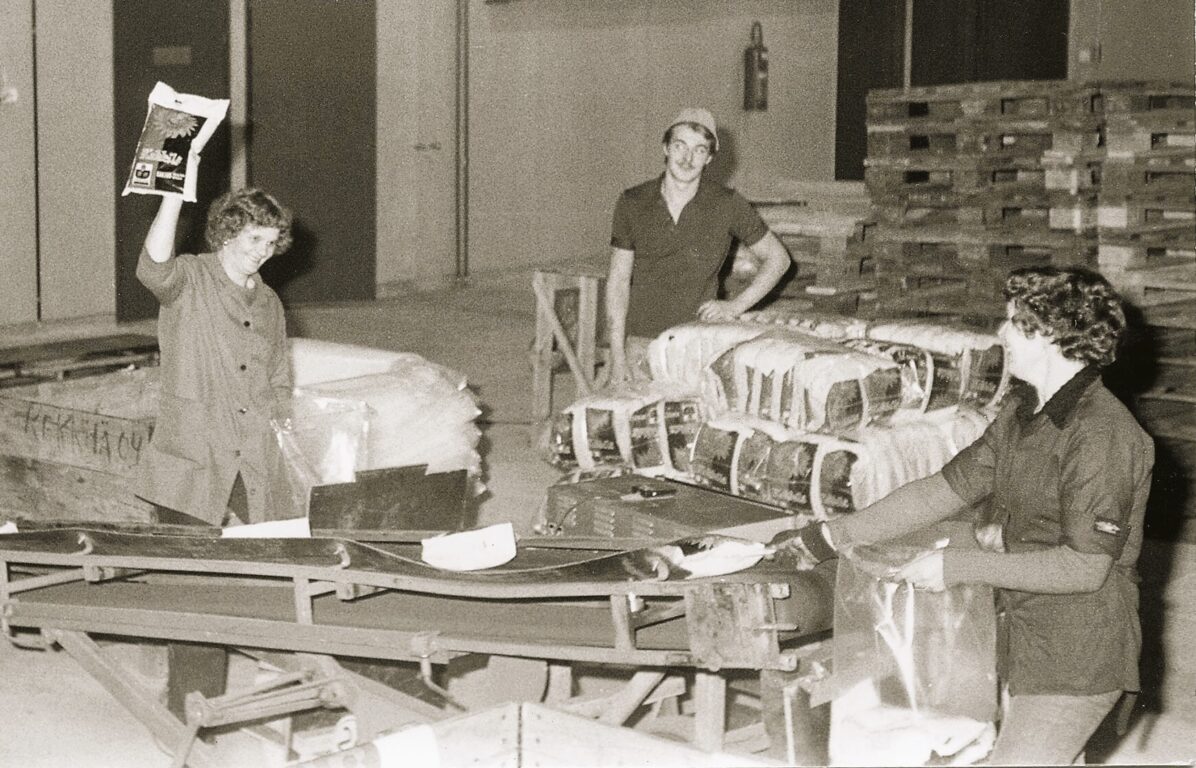Kekkilä – The Joy of Growing since 1924
The history of Kekkilä goes hand in hand with the development of Finnish garden culture. The story begins in the 1920s, with the passion of one man and one family – new ideas, ways of growing, cultivating and gardening. Throughout the years much has changed – there has been wartime, scarcity, and strong periods of growth and development. Today we look back and find wisdom in the good old knowledge and ways of doing.
 In Finland, gardening was still concentrated in the southern parts of the country in the 1800s, and it was largely a hobby for the gentry living in estates. By the 1900s, interest in gardening began to spread everywhere, especially thanks to the guidance of agricultural societies and The Martha Association. More than a hundred years ago, the story of Kekkilä also began. At the Kekkilä Manor on the Karelian Isthmus, agronomist and doctor Mikko Jortikka believed that every plant is unique and needs its own kind of care. He used his own garden as a test field, where 1800 test squares were established. It says something about his passion that Mikko planted 3000 apple tree seedlings and 1000 berry bushes on his land and cultivated, for example, tomatoes in the open field to find the best possible nutrient mixtures for different plants. The success of the fertilisation experiments was reflected in good harvests: the apples grew large and delicious, as did the tomatoes, which were sold to Helsinki and even Stockholm, and the size and taste of the strawberries and currants sold at the Vyborg market aroused great amazement. Kekkilä was born from these experiments and Jortikka’s passion for healthy garden plants, thriving gardens and tasty harvests.
In Finland, gardening was still concentrated in the southern parts of the country in the 1800s, and it was largely a hobby for the gentry living in estates. By the 1900s, interest in gardening began to spread everywhere, especially thanks to the guidance of agricultural societies and The Martha Association. More than a hundred years ago, the story of Kekkilä also began. At the Kekkilä Manor on the Karelian Isthmus, agronomist and doctor Mikko Jortikka believed that every plant is unique and needs its own kind of care. He used his own garden as a test field, where 1800 test squares were established. It says something about his passion that Mikko planted 3000 apple tree seedlings and 1000 berry bushes on his land and cultivated, for example, tomatoes in the open field to find the best possible nutrient mixtures for different plants. The success of the fertilisation experiments was reflected in good harvests: the apples grew large and delicious, as did the tomatoes, which were sold to Helsinki and even Stockholm, and the size and taste of the strawberries and currants sold at the Vyborg market aroused great amazement. Kekkilä was born from these experiments and Jortikka’s passion for healthy garden plants, thriving gardens and tasty harvests.
The Birth of Finnish Garden Culture
Mikko Jortikka’s legacy can be found not only in plant-specific fertilizers but also in the entire Finnish garden culture. He did pioneering work for Finnish gardens by distributing information, writing books and articles, and guiding people. Jortikka did not hide his message and life’s mission. In Kotipuutarha magazine, he stated that designing a garden is more important and challenging than designing the building itself, because the shape of a garden is influenced by so many things. Mikko has also played a significant role in the development of plantings done in cemeteries – as the CEO of the Finnish Home Garden Association, he worked with experts to create ”graveyard maps” for more than 300 cemeteries and church parks, and had ”beautification plants” planted in more than 50 cemeteries.
The Product Range is Expanding
In the 1950s, Finland recovered from the war and it was time for reconstruction. Finnish gardens were also renewed. Alongside the useful crops of potatoes, carrots and cabbage of the wartime, fruit trees, berry bushes and vegetable beds began to appear. At this time, various garden fertilizers became widespread, which ensured the most abundant and tasty harvest possible. After the war, Kekkilä also renewed its operations: in 1952, a new factory was established, where in addition to fertilizers, the production of flower soil begun. Until then, people had taken the soil from yards or fields, wherever it was available. The product range expanded both in terms of products and different package sizes.
Marketing Inspiration and Product Information
Advertising has been a means of informing and inspiring more and more consumers to garden. Advertisements for the flower soil were carefully made to make them attractive: for a couple of days amaryllis were filmed as they burst into bloom, while on the big screen the flowers quickly opened in a few seconds. Diverse marketing and communication have been a way of building a strong brand. For example, Kekkilä’s emotional TV commercials are still remembered decades later.
 A Reliable Partner for Professional Growers
A Reliable Partner for Professional Growers
In the 1960s and 1970s, the standard of living of Finns rose and consumer habits changed. Crops were no longer grown to the same extent in home gardens, and fruits and vegetables were now available in stores. Gardening became a hobby and attention was drawn to beautiful yards and ornamental plants. Vegetables and fruits came to the shops from professional farmers, and greenhouse cultivation took a big leap in the 1960s. Our products have enabled bigger and tastier harvests for several generations of professional farmers.
More Sustainable Urban Environment
By the 1980s, it became apparent that large construction projects needed high-quality soil. Kekkilä took up the challenge and was the first to deliver productized substrates for landscaping. Decades of experience in manufacturing and development of high-quality landscaping substrates now enables the full-scale use of circular economy raw materials. For example, compost has been used since the beginning. Enabling green, functional urban environments together with partners is more important than ever.
Future
Kekkilä has always been a pioneer. While Mikko Jortikka was thinking about how to develop the right nutrient mix for each plant, today in Kekkilä we look for answers to both local and bigger, global questions.

